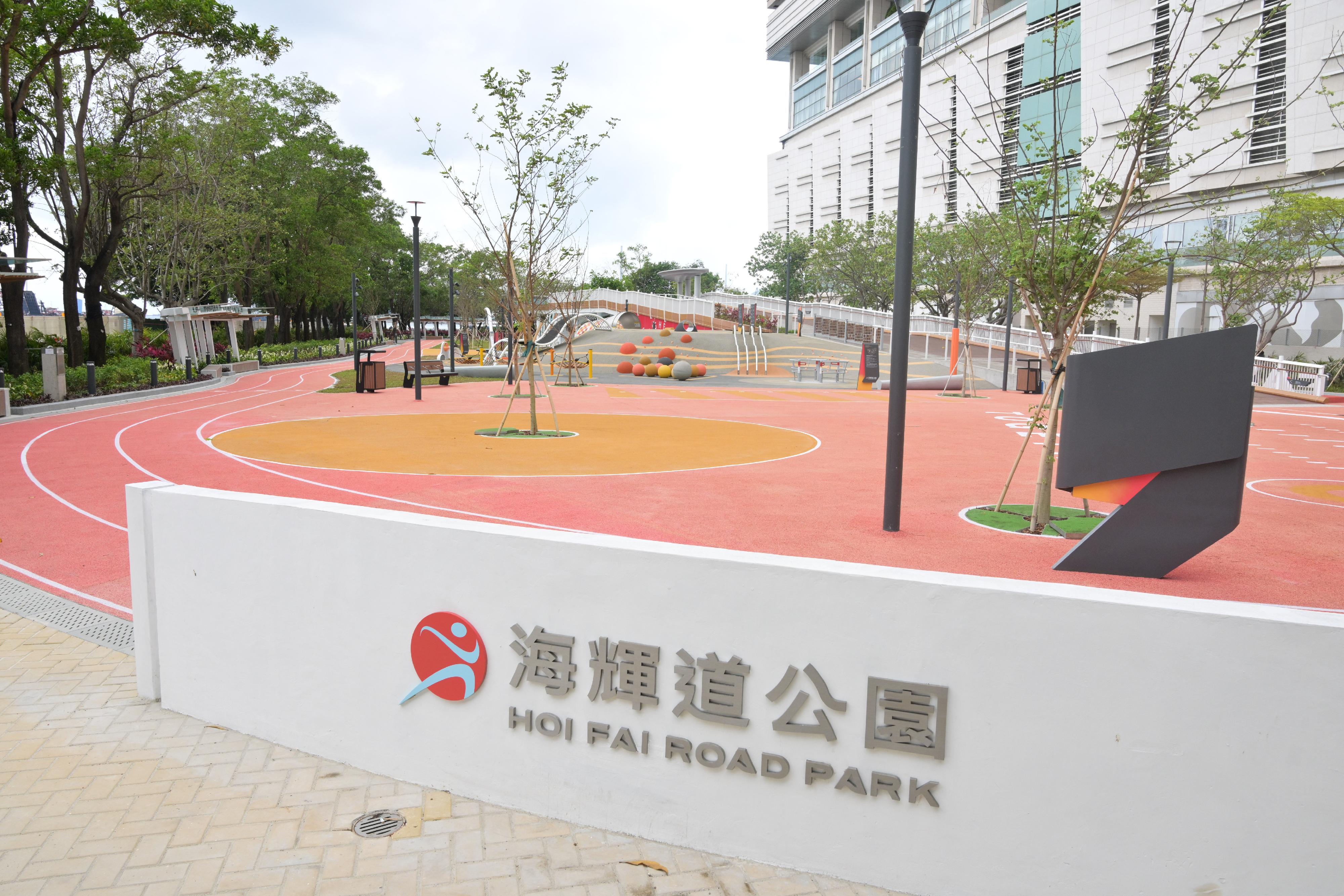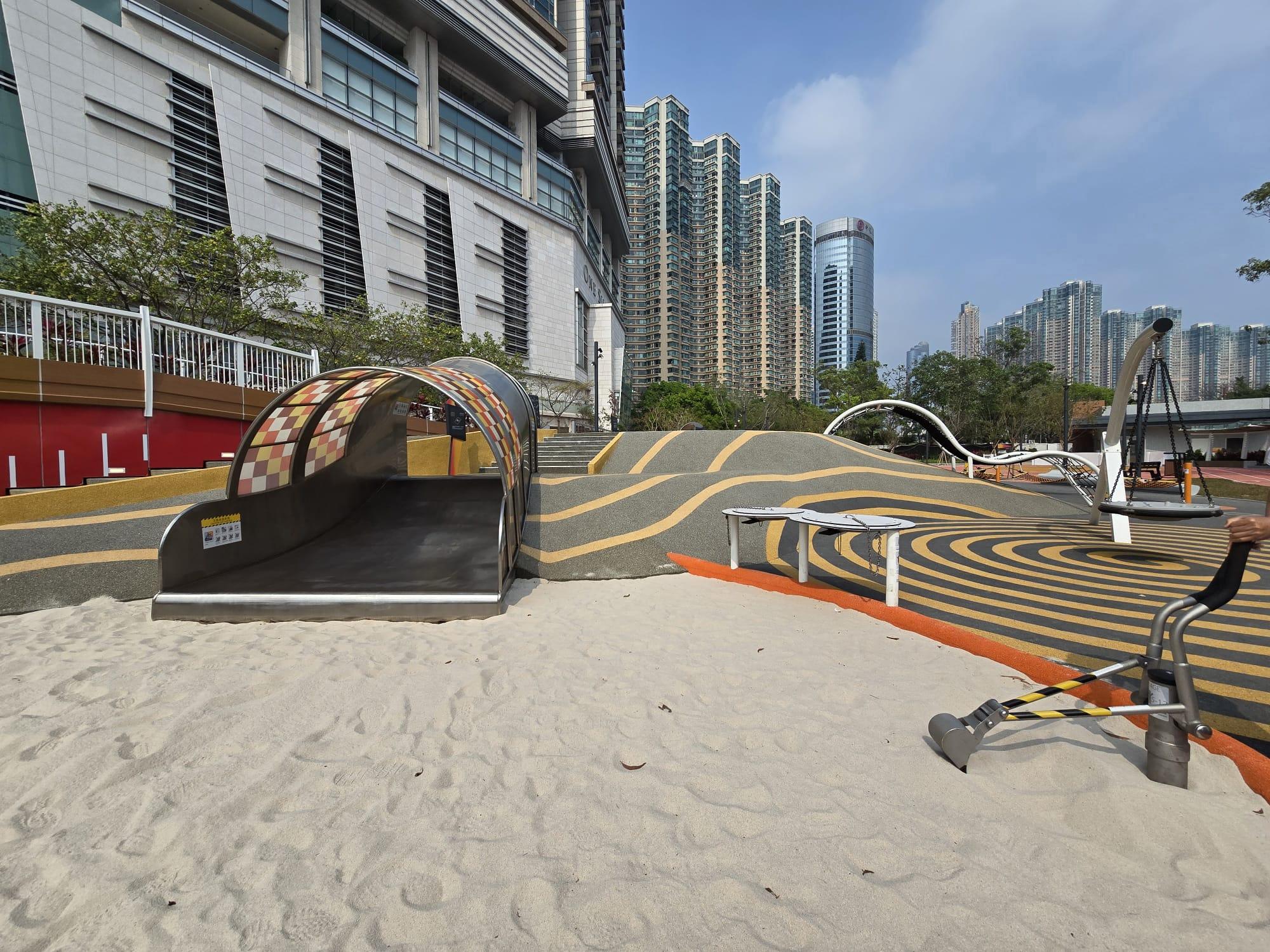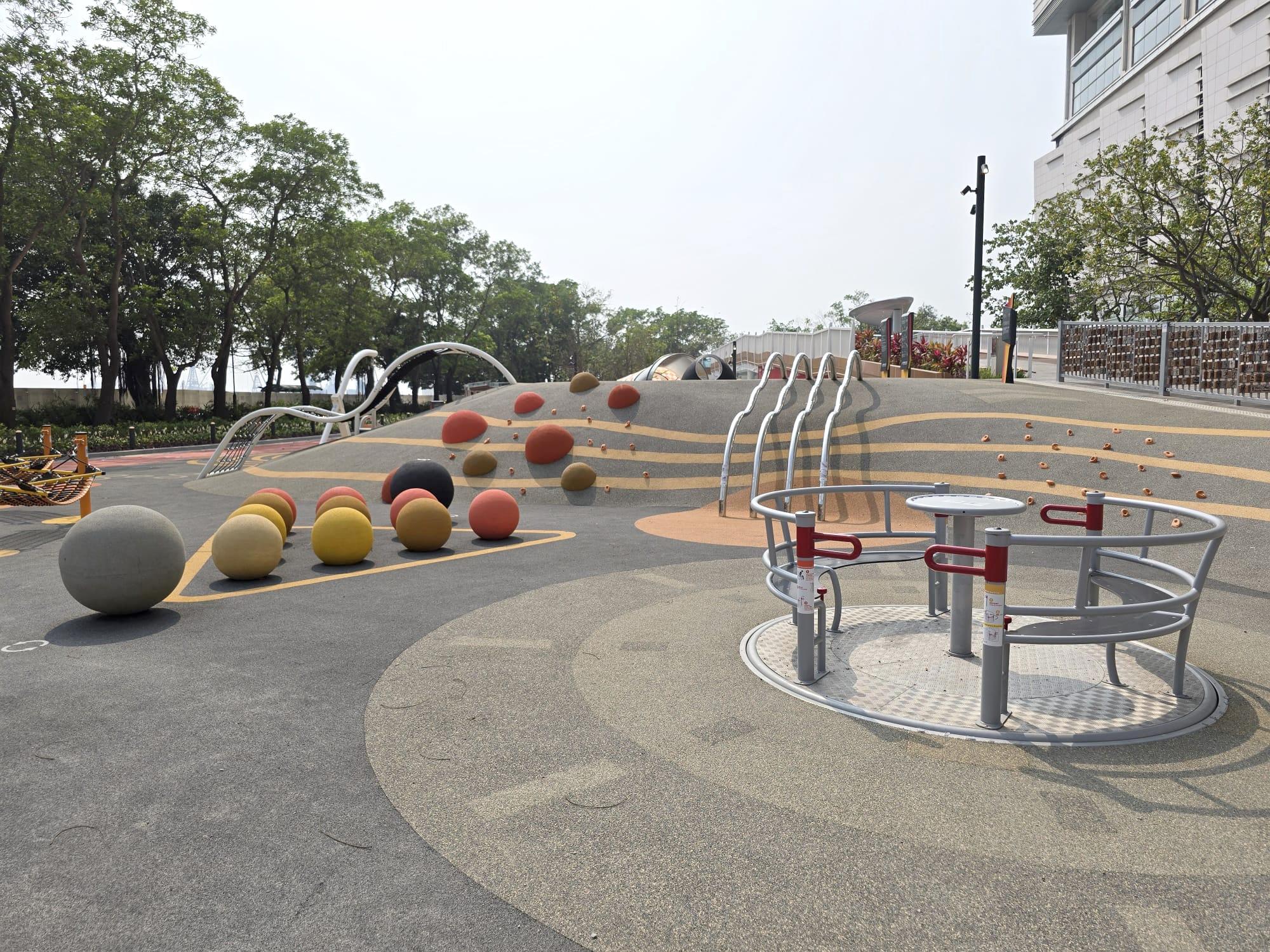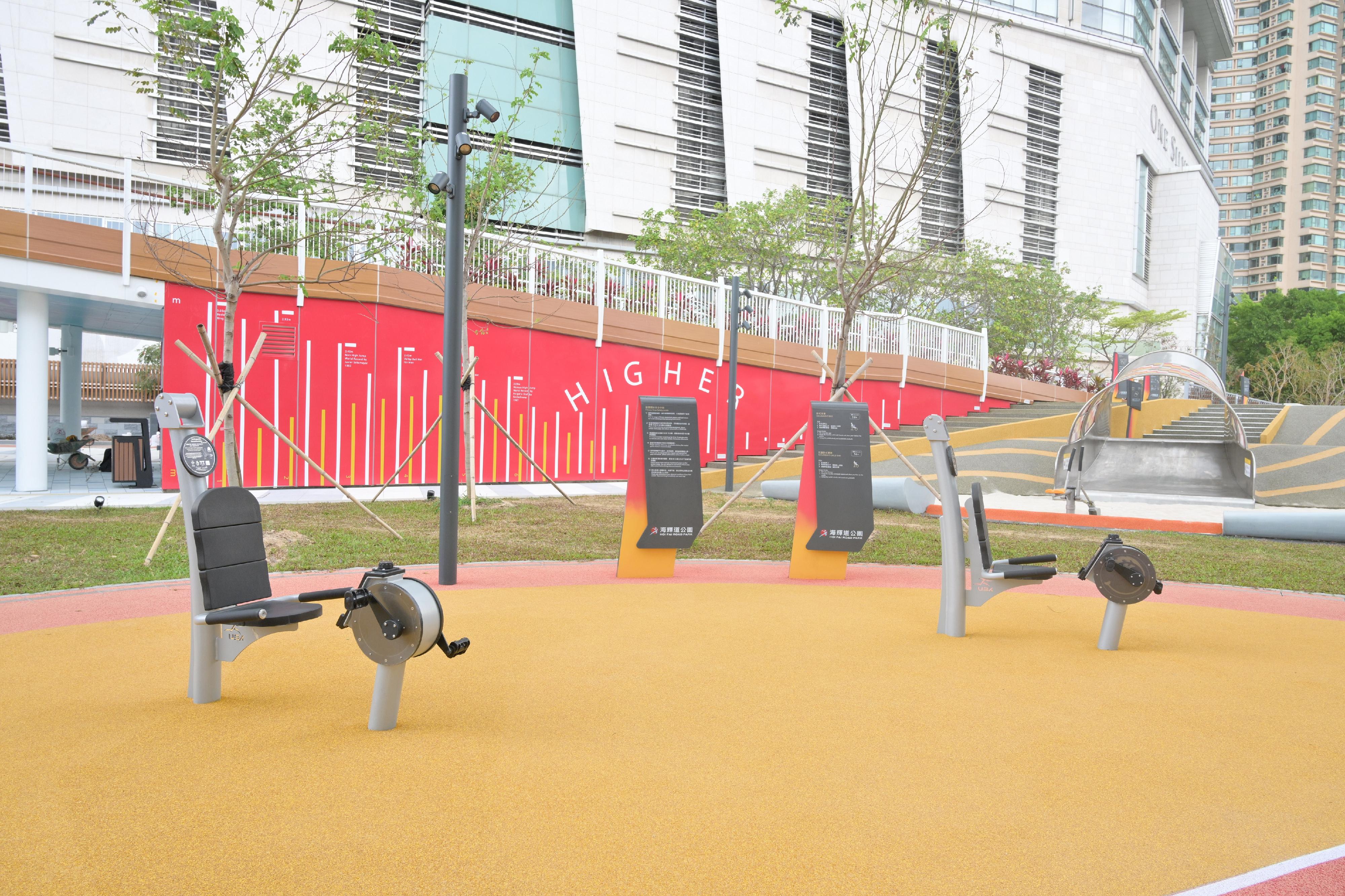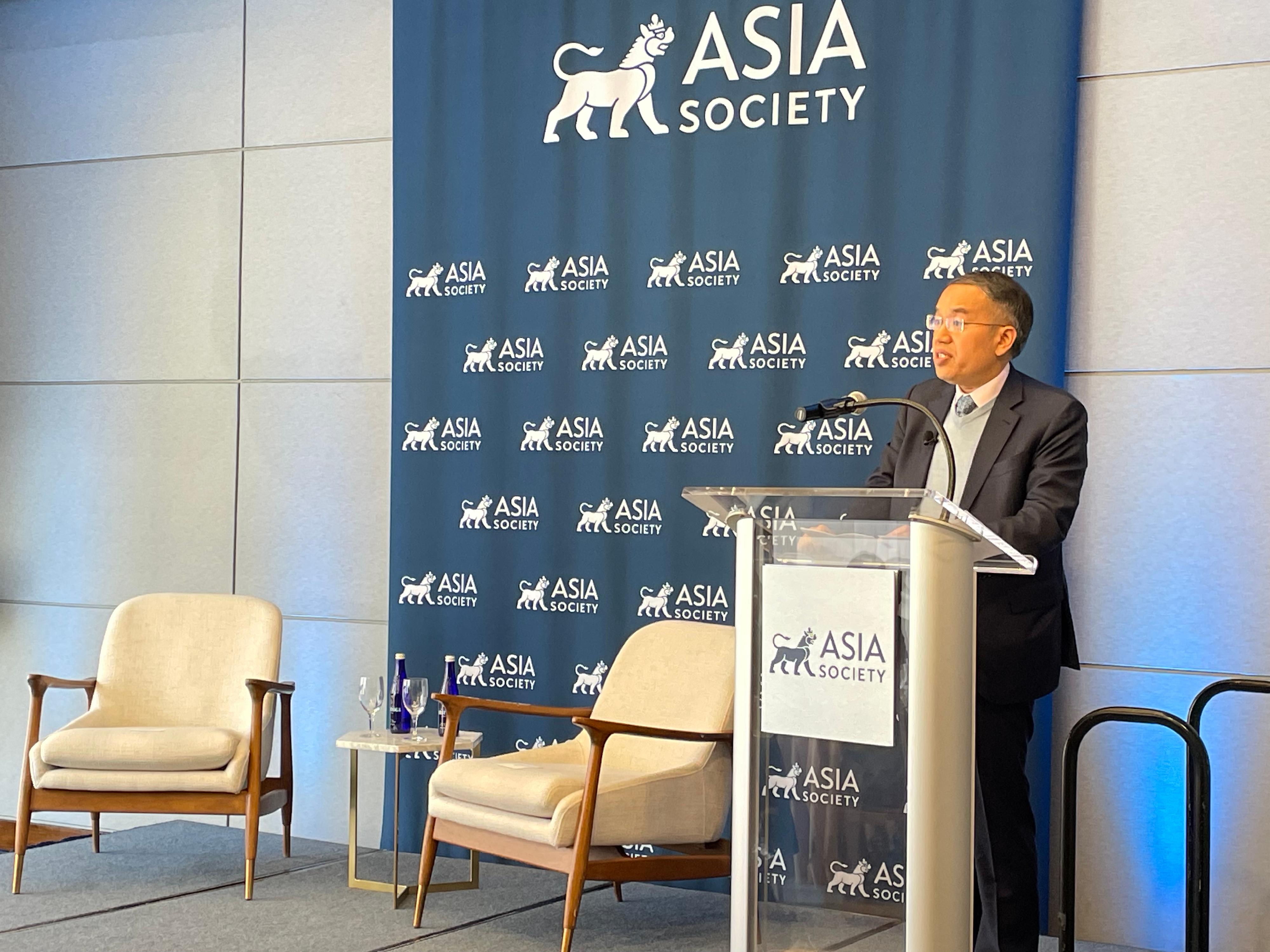Following is the speech by the Secretary for Financial Services and the Treasury, Mr Christopher Hui, at a luncheon co-hosted by the Hong Kong Economic and Trade Office in New York and the Asia Society yesterday (April 9, New York time):
Distinguished guests, ladies and gentlemen,
It is my great honour to be here today at this luncheon co-hosted by the Asia Society and our Economic and Trade Office in New York. The Asia Society has all along been promoting mutual understanding and strengthening partnerships among peoples, leaders, and institutions of Asia and the United States for years.
Before I chat with Andy (Editor at Large at Barron's, Mr Andy Serwer), I would like to share with you Hong Kong's vision and strategies on strengthening our position as a global financial hub and a gateway to Asia in three simple letters – A, B and C.
A for anchor: Hong Kong as a global wealth management hub
"A" stands for anchor. Hong Kong is like an anchor, being stable and resilient during uncertain times. Being stable is a key to attract wealth in a place. Despite the hit by COVID-19 on our social life and economy, Hong Kong remains Asia's largest hub for hedge funds and the second largest for private equity, behind only Mainland China. Currently, we oversee nearly US$4 trillion in assets. Eleven of world's top 20 insurers, and 73 of world's top 100 banks, operate in Hong Kong. Our banking sector maintains a capital adequacy ratio of around 21 per cent, much higher than the international standard of 8 per cent. Our liquidity ratio stands at 175 per cent, well above the 100 per cent benchmark. Our Linked Exchange Rate System is supported by robust foreign currency reserve assets of over US$420 billion – 1.7 times the size of our monetary base. This provides unparalleled stability and confidence in our currency, a crucial factor for investors and businesses alike.
Also, Hong Kong has developed as a leading family office hub. At the moment, we have over 2 700 single-family offices. We have introduced various measures in the past few years to facilitate the establishment and operation of family offices in Hong Kong, such as providing tax concessions to family-owned investment holding vehicles managed by single-family offices in Hong Kong, launching a new Network of Family Office Service Providers, bringing together private banks, accounting and legal firms, trusts, and other professionals to better serve the needs of family offices, as well as setting up the Hong Kong Academy for Wealth Legacy to spearhead training, knowledge exchange, and networking opportunities for both industry practitioners and next-generation wealth owners.
Our stability is backed by the "one country, two systems" principle. A high degree of autonomy, courts' independent exercise of judicial power and the rule of law are all upheld in Hong Kong.
B for buffer: Hong Kong as an international risk management centre
Now, we turn to "B". Do you know what it stands for? Yes, it stands for buffer. Hong Kong has long positioned itself as an international risk management centre, providing a diverse range of risk management channels, including professional insurance services. We strive to diversify our financial services offerings, for example developing RMB (Renminbi) businesses, as we seek to provide a buffer against external economic challenges and uncertainties.
Hong Kong, as the world's largest offshore RMB business hub, processes about 75 per cent of global offshore RMB settlement. We also have the world's largest offshore RMB liquidity pool, at over RMB1 trillion. To capitalise on this enormous opportunity, we are pressing ahead with the development of a robust offshore RMB ecosystem, which includes (i) deepening mutual-market access schemes (such as Bond Connect, Swap connect and Wealth Management Connect schemes) that facilitate RMB cross-boundary investment and two-way fund flows, (ii) encouraging financial institutions to provide more offshore RMB products and risk management tools, and (iii) developing our Central Moneymarkets Unit into Asia's major international central securities depository platform.
As an international risk management centre, Hong Kong is also actively promoting the development of insurance-linked securities (ILS). We have established a dedicated regulatory regime and launched a pilot grant scheme to attract more issuers to our city. To date, we have facilitated the issuance of four catastrophe bonds in Hong Kong, one of which marked the inaugural listing of its type of ILS, including the issuance of a catastrophe bond by the World Bank in Hong Kong with a size of US$350 million, which offers protection against losses related to earthquake risks in Chile.
With our strong financial buffers, diverse product offerings, and robust regulatory frameworks, Hong Kong serves as a vital cushion against the volatility and uncertainties that characterise today's global landscape.
C for capstan: Hong Kong as a gateway to asia and beyond
Finally, we come to "C", which stands for capstan, i.e. the machine for raising the heavy weight such that the ship can move forward. Hong Kong is strategically located within a four-hour flight from most of Asia Pacific's key financial markets, and less than a five-hour flight from half of the world's population, and is just next to the Mainland China, making the city an ideal place for business events and travel from all over the world.
In particular, Hong Kong is a gateway to the fast-growing markets of the Association of Southeast Asian Nations (ASEAN), one of our priority strategic partners. Travelling from Hong Kong to the Philippines or Vietnam is even faster than you can travel from Singapore to these countries. ASEAN is a priority strategic partner for Hong Kong, and we are actively strengthening our engagement with the region. I recently had the pleasure of welcoming Dr Tony Tan Caktiong, the Chairman and Founder of Jollibee Foods Corporation from the Philippines, to Hong Kong for the Wealth for Good in Hong Kong Summit for global family offices. Over a delightful tea gathering at a Jollibee restaurant, we discussed Hong Kong's appeal to family offices and entrepreneurs, highlighting our strategic location, business-friendly environment, status as an international financial centre, our low and simple tax system, as well as the liquidity of our capital market. These factors make Hong Kong an ideal destination for businesses seeking global expansion.
Our connectivity extends beyond ASEAN to the broader Belt and Road Initiative regions. Hong Kong will continue to host the annual Belt and Road Summit, a flagship event that brings together government officials, business leaders, and other stakeholders to explore collaboration opportunities. We are also hosting the Conference of Belt and Road Initiative Tax Administration Cooperation Forum in September, providing a platform for representatives from governments, international organisations, academic institutions, and strategic enterprises to establish connections and exchange ideas on tax administration co-operation and capacity building.
Hong Kong's role as a capstan, or pivot point, is fundamental to our vision of continuing to serve as a gateway to Asia and a hub for global businesses and investors. By leveraging our strategic location, deep connections with Mainland China, and strong partnerships across the region, Hong Kong is poised to drive further collaboration, innovation, and progress, not only for ourselves, but for the broader Asia-Pacific community.
Ladies and gentlemen, please remember Hong Kong's "ABCs" – anchor, buffer, and capstan – which underscores our steadfast commitment to maintaining our position as an international financial centre and a trusted partner for businesses and investors. Our anchor of stability and resilience, our robust financial buffers, and our role as a strategic pivot point make Hong Kong an indispensable part of the global economic landscape.
And please enjoy your lunch, as I am now excited to continue my conversation with Andy. Thank you.
